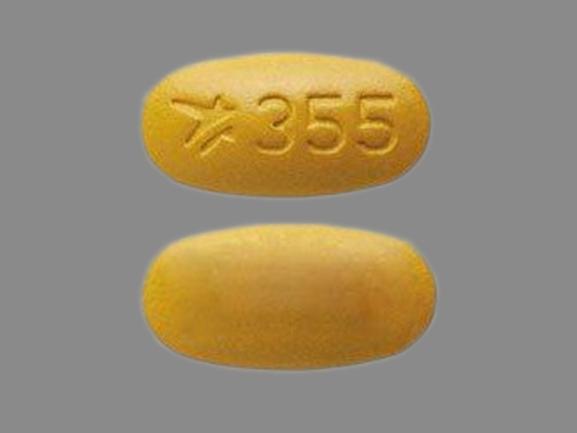Myrbetriq Disease Interactions
There are 4 disease interactions with Myrbetriq (mirabegron).
Beta-3 adrenergic agonist (applies to Myrbetriq) urinary retention
Moderate Potential Hazard, Moderate plausibility.
Although an increased risk of urinary retention was not observed in a controlled clinical safety study in patients with bladder outlet obstruction, urinary retention has been reported in this population during postmarketing use. Therapy with mirabegron should be administered cautiously in patients with clinically significant bladder outlet obstruction and conditions predisposing to urinary retention.
Mirabegron (applies to Myrbetriq) hypertension
Moderate Potential Hazard, Moderate plausibility.
Mirabegron can increase blood pressure. In clinical studies, the use of mirabegron was associated with dose-related increases in supine blood pressure. At the maximum recommended dose of 50 mg, the mean maximum increase in systolic/diastolic blood pressure was approximately 3.5/1.5 mmHg greater than placebo in healthy volunteers and approximately 0.5 to 1 mmHg greater than placebo in patients with overactive bladder. Worsening of preexisting hypertension was reported infrequently in patients receiving mirabegron. Therapy with mirabegron should be administered cautiously in patients with hypertension. Periodic blood pressure determinations are recommended. Mirabegron is not recommended for use in patients with severe, uncontrolled hypertension, defined as systolic blood pressure >=180 mm Hg and/or diastolic blood pressure >=110 mm Hg.
Mirabegron (applies to Myrbetriq) liver disease
Moderate Potential Hazard, High plausibility.
Mirebegron is partially metabolized by the liver through multiple pathways. Following administration of a single 100 mg dose, mean mirabegron peak plasma concentration (Cmax) and systemic exposure (AUC) increased by 9% and 19%, respectively, in volunteers with mild hepatic impairment (Child-Pugh Class A) and 175% and 65%, respectively, in volunteers with moderate hepatic impairment (Child-Pugh Class B) compared to volunteers with normal hepatic function. No dosage adjustment is necessary in patients with mild hepatic impairment. In patients with moderate hepatic impairment, the daily dosage of mirabegron should not exceed 25 mg. Mirabegron has not been studied in patients with severe hepatic impairment (Child-Pugh Class C). Mirabegron is not recommended for use in these patients.
Mirabegron (applies to Myrbetriq) renal dysfunction
Moderate Potential Hazard, High plausibility.
Mirebegron is partially eliminated by the kidney through active tubular secretion and glomerular filtration, with renal clearance accounting for approximately 25% of the total clearance. Following administration of a single 100 mg dose, mean mirabegron peak plasma concentration (Cmax) and systemic exposure (AUC) increased by 6% and 31%, respectively, in volunteers with mild renal impairment (estimated GFR 60 to 89 mL/min/1.73 m2), 23% and 66%, respectively, in volunteers with moderate renal impairment (estimated GFR 30 to 59 mL/min/1.73 m2), and 92% and 118%, respectively, in patients with severe renal impairment (estimated GFR 15 to 29 mL/min/1.73 m2) compared to volunteers with normal renal function. No dosage adjustment is necessary in patients with mild or moderate renal impairment. In patients with severe renal impairment, the daily dosage of mirabegron should not exceed 25 mg. Mirabegron has not been studied in patients with end stage renal disease (CrCl <15 mL/min or estimated GFR <15 mL/min/1.73 m2 or requirement for hemodialysis). Mirabegron is not recommended for use in these patients.
Switch to professional interaction data
Myrbetriq drug interactions
There are 256 drug interactions with Myrbetriq (mirabegron).
Myrbetriq alcohol/food interactions
There are 2 alcohol/food interactions with Myrbetriq (mirabegron).
More about Myrbetriq (mirabegron)
- Myrbetriq consumer information
- Check interactions
- Compare alternatives
- Pricing & coupons
- Reviews (281)
- Drug images
- Side effects
- Dosage information
- Patient tips
- During pregnancy
- Generic availability
- Support group
- FDA approval history
- Drug class: urinary antispasmodics
- Breastfeeding
- En español
Related treatment guides
Drug Interaction Classification
| Highly clinically significant. Avoid combinations; the risk of the interaction outweighs the benefit. | |
| Moderately clinically significant. Usually avoid combinations; use it only under special circumstances. | |
| Minimally clinically significant. Minimize risk; assess risk and consider an alternative drug, take steps to circumvent the interaction risk and/or institute a monitoring plan. | |
| No interaction information available. |
See also:
Further information
Always consult your healthcare provider to ensure the information displayed on this page applies to your personal circumstances.


